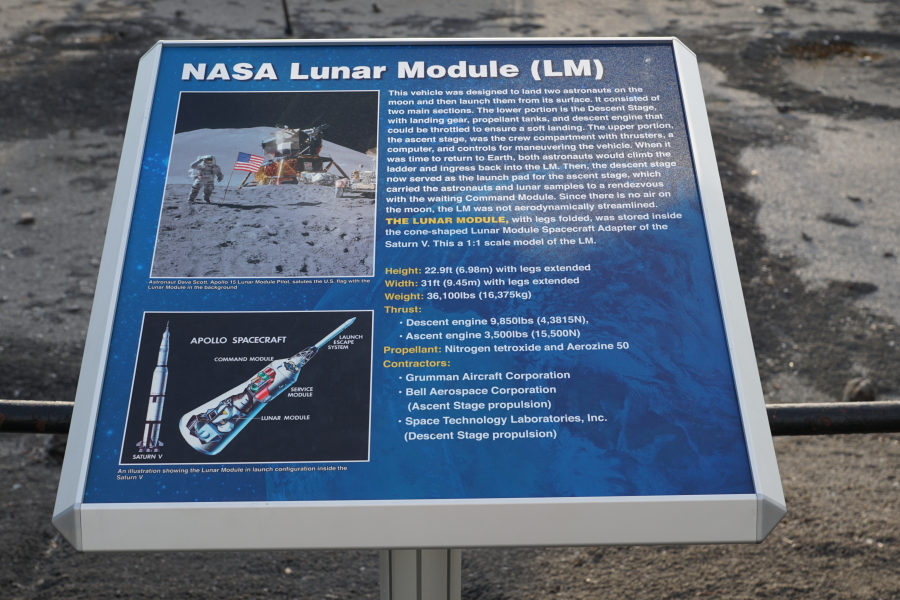| Prev |
heroicrelics.org U.S. Space & Rocket Center Site Index LM Mockup Gallery |
Next |
dscc6294.jpg
By 2016, the museum had started updating signs again, although the sign's text had been tweaked only slightly as compared to the sign from 2002. It reads
NASA Lunar Module (LM)
This vehicle was designed to land two astronauts on the moon. It consisted of two main sections. The lower portion is the Descent Stage, with landing gear, propellant tanks, and descent engine which could be throttled to ensure a soft landing. The upper portion, the ascent stage, was the crew compartment with thrusters, a computer, and controls for maneuvering the vehicle. When it was time to return to Earth, both astronauts would climb the ladder and ingress back into the LM. Then, the descent stage now served as a launch pad for the ascent stage, which carried the astronauts and lunar samples to a rendezvous with the waiting Command Module. Since there is no air on the moon, the LM was not aerodynamically streamlined. The Lunar Module, with legs folded, was stored inside the cone-shaped Lunar Module Spacecraft Adapter of the Saturn V Launch Vehicle. This is a 1:1 scale model of the LM.
Height: 22.9 ft (6.98m) with legs extended Width: 31 ft (9.45m) with legs extended Weight: 36,100 lbs (16,375 kg) Thrust:
- Descent engine 9,850 lbs (43,815N)
- Ascent engine 3,500 lbs (15,500N)
Propellant: Nitrogen tetroxide and Aerozine 50 Contractors:
- Grumman Aircraft Corporation
- Bell Aerospace Corporation (Ascent Stage propulsion)
- Space Technology Laboratories, Inc. (Descent Stage propulsion)

| Time picture taken | Mon Oct 31 16:45:54 2016 |
| Location picture taken |
Rocket Park U.S. Space & Rocket Center Huntsville, AL |
| Prev |
heroicrelics.org U.S. Space & Rocket Center Site Index LM Mockup Gallery |
Next |